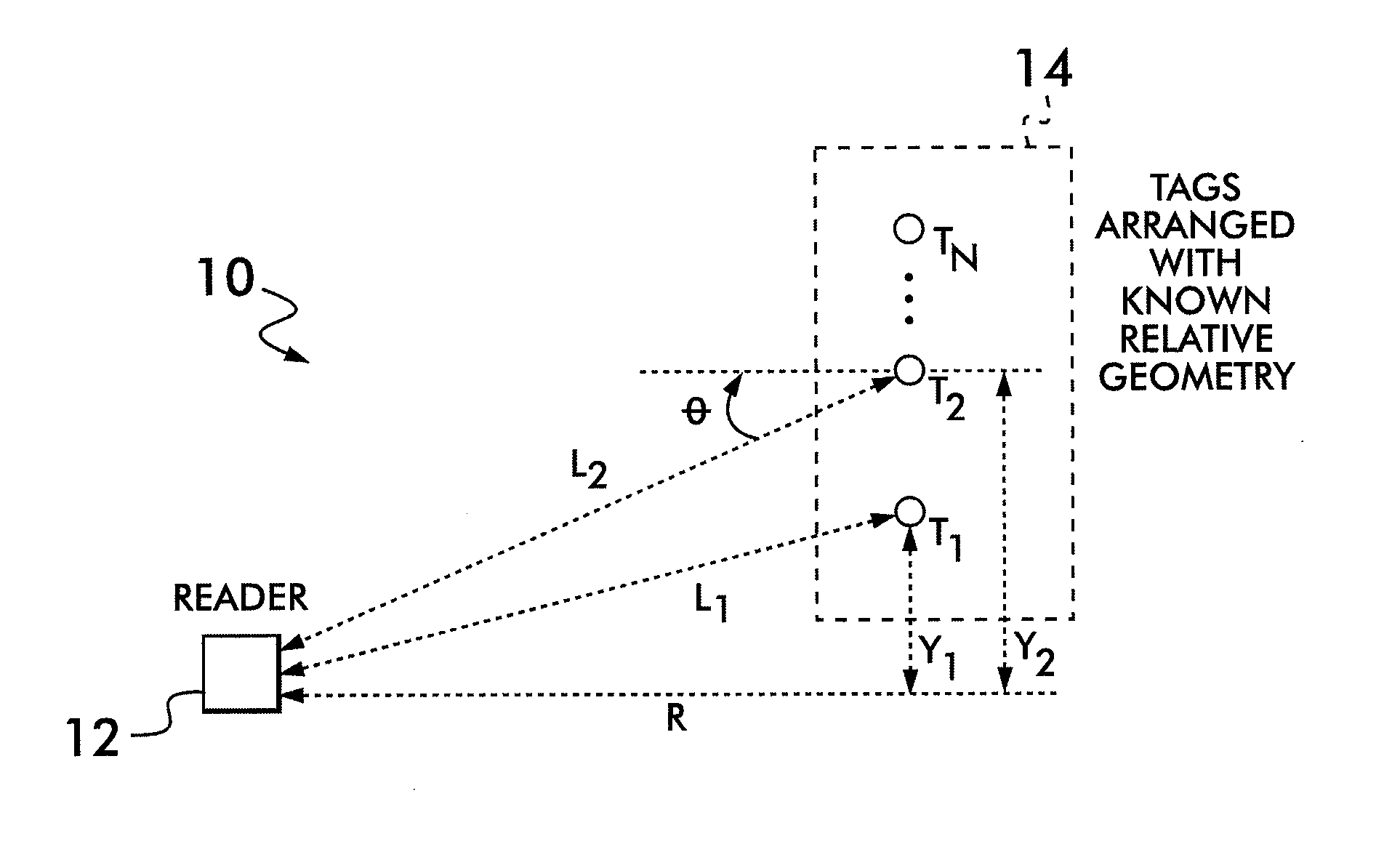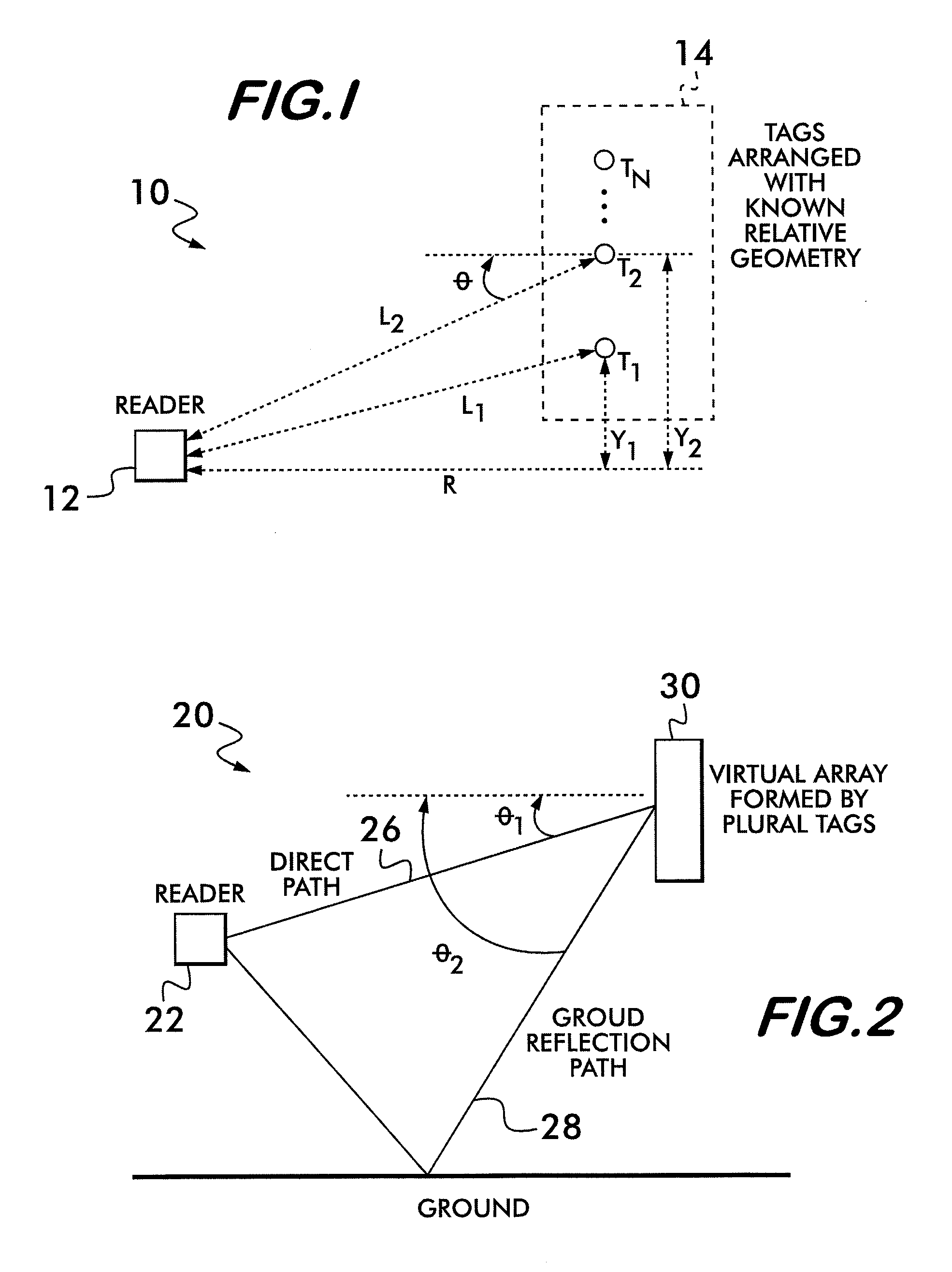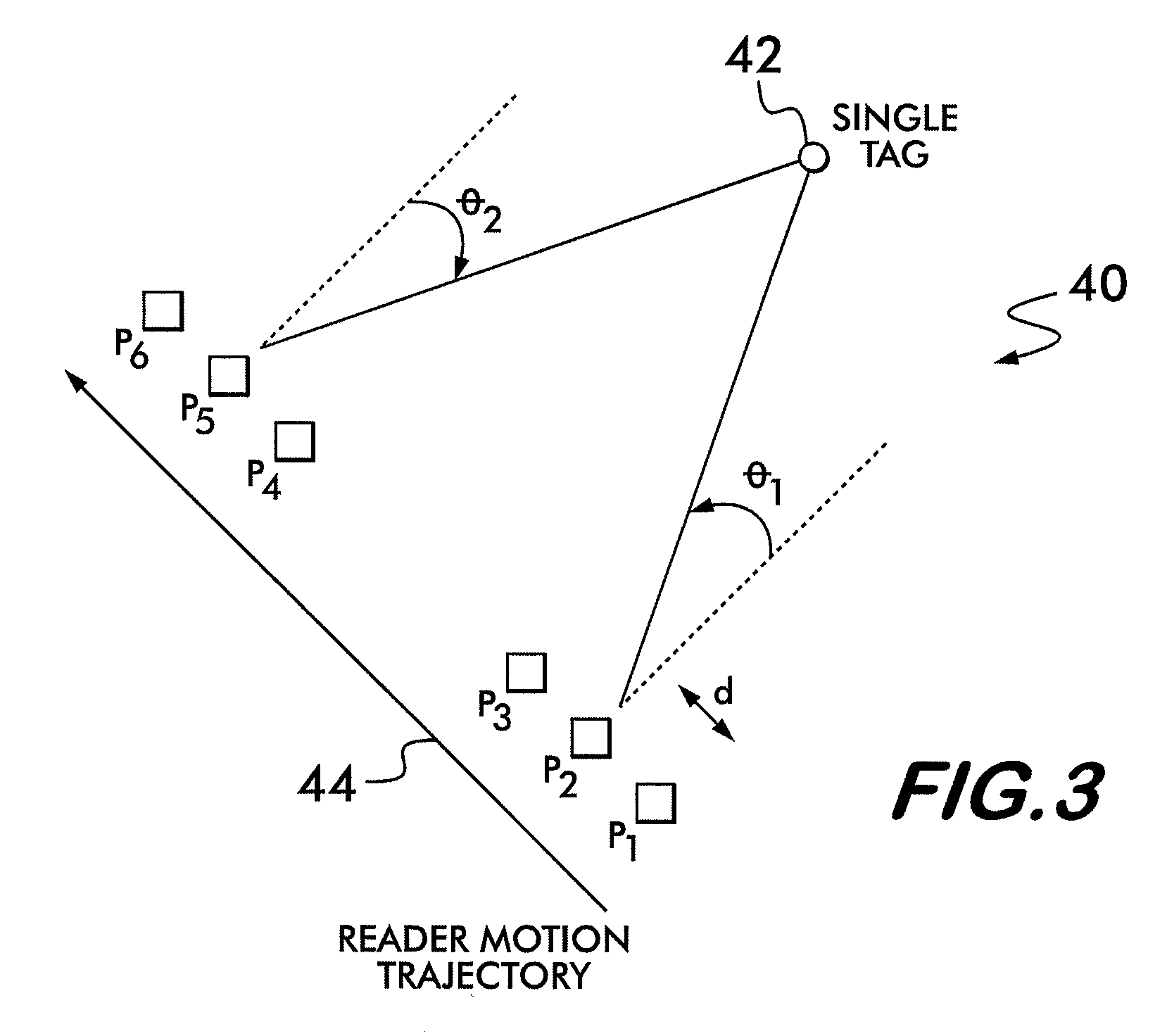Localization using virtual antenna arrays in modulated backscatter RFID systems
a virtual antenna array and backscatter technology, applied in direction finders using radio waves, multi-channel direction-finding systems using radio waves, instruments, etc., can solve the problem that the marker tags in the menache system do not maintain a known geometric relationship with respect, and achieve enhanced asset tracking, localization accuracy, and backscatter signals. enhanced
- Summary
- Abstract
- Description
- Claims
- Application Information
AI Technical Summary
Benefits of technology
Problems solved by technology
Method used
Image
Examples
Embodiment Construction
[0023]Referring now to FIG. 1, there is shown a schematic representation of the virtual antenna array system 10. The virtual antenna array system 10 includes a tag reader 12 and a virtual array tag 14. A plurality of tags T1-TN are disposed on the virtual array tag 14 in a manner know those skilled in the art, wherein the virtual array tag 14 can comprise any type of carrier device upon which the tags T1-TN may be disposed. The tags T1-TN are preferably single antenna tags. Although the individual tags T1-TN are shown arranged in a linear array, it will be understood that they can be disposed in any known geometric relationship with respect to each other. For example, the tags T1-TN can be fixed in a rectangular array, in an L-shape array, in a circular array, or in any other known geometries including other two dimensional geometries and three dimensional geometries.
[0024]The tag reader 12 can read two or more tags T1-TN within the virtual array tag 14. In the case where the tag re...
PUM
 Login to View More
Login to View More Abstract
Description
Claims
Application Information
 Login to View More
Login to View More - R&D
- Intellectual Property
- Life Sciences
- Materials
- Tech Scout
- Unparalleled Data Quality
- Higher Quality Content
- 60% Fewer Hallucinations
Browse by: Latest US Patents, China's latest patents, Technical Efficacy Thesaurus, Application Domain, Technology Topic, Popular Technical Reports.
© 2025 PatSnap. All rights reserved.Legal|Privacy policy|Modern Slavery Act Transparency Statement|Sitemap|About US| Contact US: help@patsnap.com



